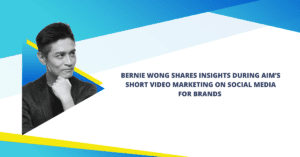Apart from producing Facebook and Instagram content for my clients, I have been actively researching and putting out content for them on LinkedIn. In my opinion, LinkedIn is a social media platform that has been underrated for a long time. Many still see LinkedIn as a place to host their CVs, to plan their next career moves, or as a recruitment tool for companies. I don’t find this perception at fault. It’s because the LinkedIn interface lacks structure. As such, the general lack of understanding of its features is almost excusable. However, let me explain why SMEs, executives, and marketers should start paying closer attention to what this platform can offer.
Many commercial functions can be better organized.
I consider myself an early LinkedIn user – so much so that I was invited to take part in LinkedIn’s pilot program for Premium users. LinkedIn offers useful functions for B2B sales professionals and head-hunters. Its Sales Navigator is a good tool to generate leads. Even if you don’t pay the subscription fee, you have access to a world of PowerPoint presentations hosted on slide shares. They can be a good resource to discover knowledge quickly. Unfortunately, one would also come across several one-slide, spam presentation decks uploaded to optimize SEO, or gain more traffic. This is a result of LinkedIn not properly regulating what is posted on its slideshow sharing platform.
Let’s hope that the new sellers will help to manage this knowledge treasury well. LinkedIn Learning is another good place to increase one’s business knowledge. Although it contains all kinds of content, the final application has not been well developed. In such a way, I find that LinkedIn has a lot of good – although haphazard – ideas. For example, LinkedIn Group has all along been regarded as a pool of
business talent, but its impact has been diluted due to poor management and functions that are not well thought out.
A case in point is how LinkedIn has said that it will focus on developing LinkedIn Stories. But is this a function that business professionals need? If the endeavor is simply to keep users, the genuine needs of target users have been overlooked. Such a gimmick often only generates short-lived interest, and the results remain to be seen.
Big brands rely on content to dominate the industry.
Don’t take me the wrong way. I am not saying that LinkedIn has no value, but it has the potential to do so much better. When I planned advertising content on LinkedIn for clients last year, I set goals that would surpass normal expectations. Advertising on LinkedIn may be more expensive compared to Facebook or Instagram. But it is reasonable to expect a higher price tag. LinkedIn can apply more targeted marketing data of its users, leading to higher-quality clicks.
There is a set of strategies for advertising and content creation that is exclusive to LinkedIn and has a higher ROI. I have longer-term projects to manage and produce exclusive content on LinkedIn this year for my clients. The number of related inquiries has also increased compared to previous years.
Many established brands have not only set up a dedicated page for recruitment but have also used LinkedIn as a form of corporate communication. By posting valuable content to business partners, we aim to make connections and create opportunities for collaboration. This has been a good strategy, at least in my company’s experience. As a result, we have connected with many high-quality customers. While it does not mean that business opportunities will present themselves all at once, LinkedIn offers great potential if businesses manage their content strategy well.
SMEs and executives must become KOLs.
My recent projects have all been about producing high-quality content. While their aim is undoubtedly to have customers do business with them, brands should understand the importance of becoming a KOL through such content marketing. In the business world, the term “thought leader” is increasingly preferred since “KOL” may carry a negative connotation. Besides producing content, we also suggest possible content that clients can share. The implementation does not necessarily have to be handled by an agency, or a dedicated brand manager.
If you are an SME owner or a brand executive without the resources to invest in managing a LinkedIn page, there is no harm in looking after your personal account first. Add a professional profile photo and a meaningful background photo. Update your profile and your resume. Spend some thought on making
your headline more than just a job title. Then start to post valuable industry information and build your contacts. The results will surprise you.
LinkedIn is a must-have after Facebook.
For retail brands, Facebook and Instagram brand accounts are must-haves. For B2B brands, sales professionals, or anyone pursuing business collaborations, LinkedIn is a definite must-have. Facebook’s organic reach is dismal, while LinkedIn is fairly generous. Jump on the bandwagon to reap the opportunities available now. There is no certainty how these will change. If you want to expand your foothold and branch out as a thought leader in your field, go beyond Facebook, and get on LinkedIn.
Original source: https://www.mpfinance.com/fin/dailyb2.php?col=1592303366123&node=1600051323259&issue=20200914








